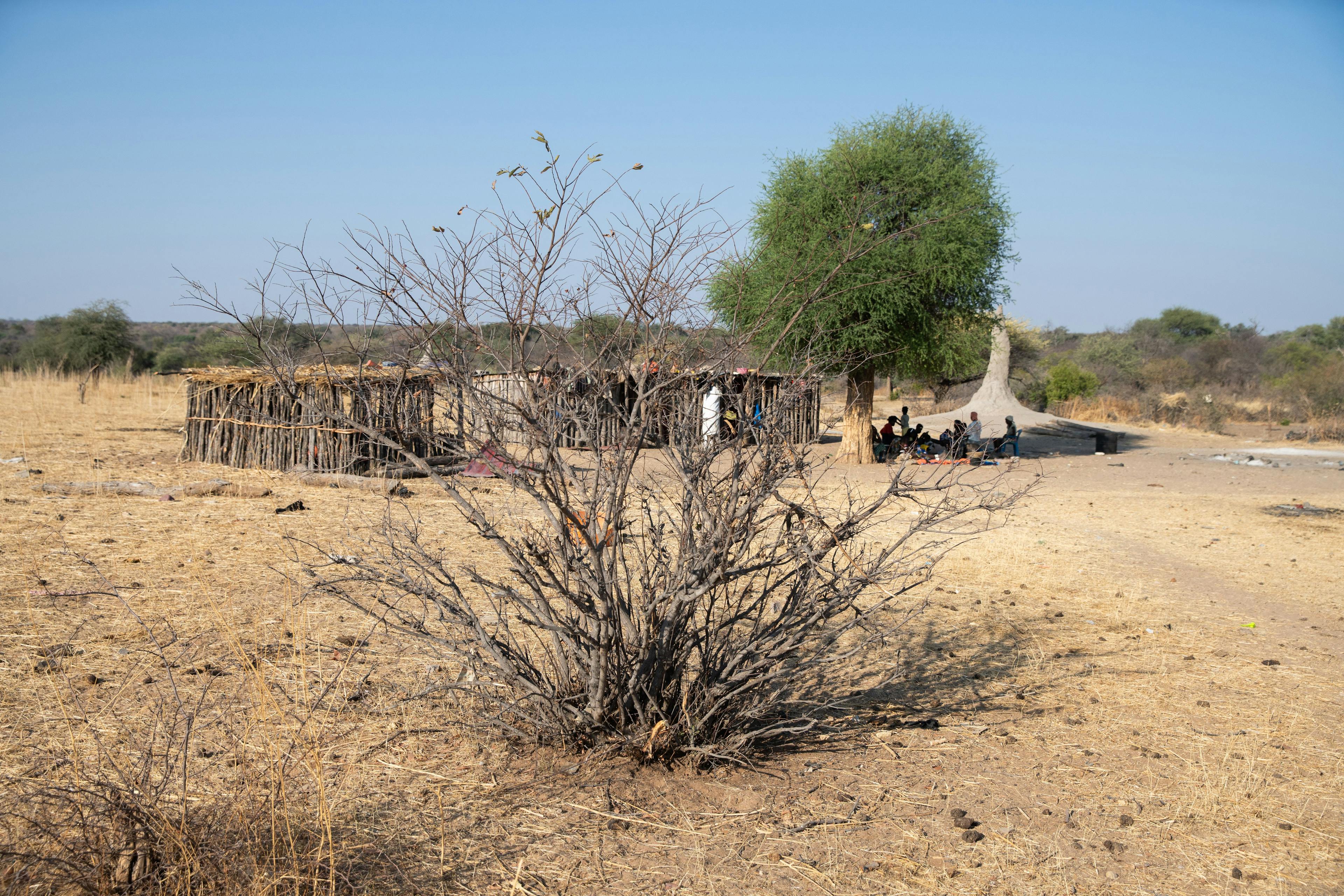Voices from thefrontlines
Climate change is reshaping our world and exposing Africans, across the continent, to increased hardship. How can its people be empowered to face climate shocks and stressors and make informed decisions to move or stay now and in the future?
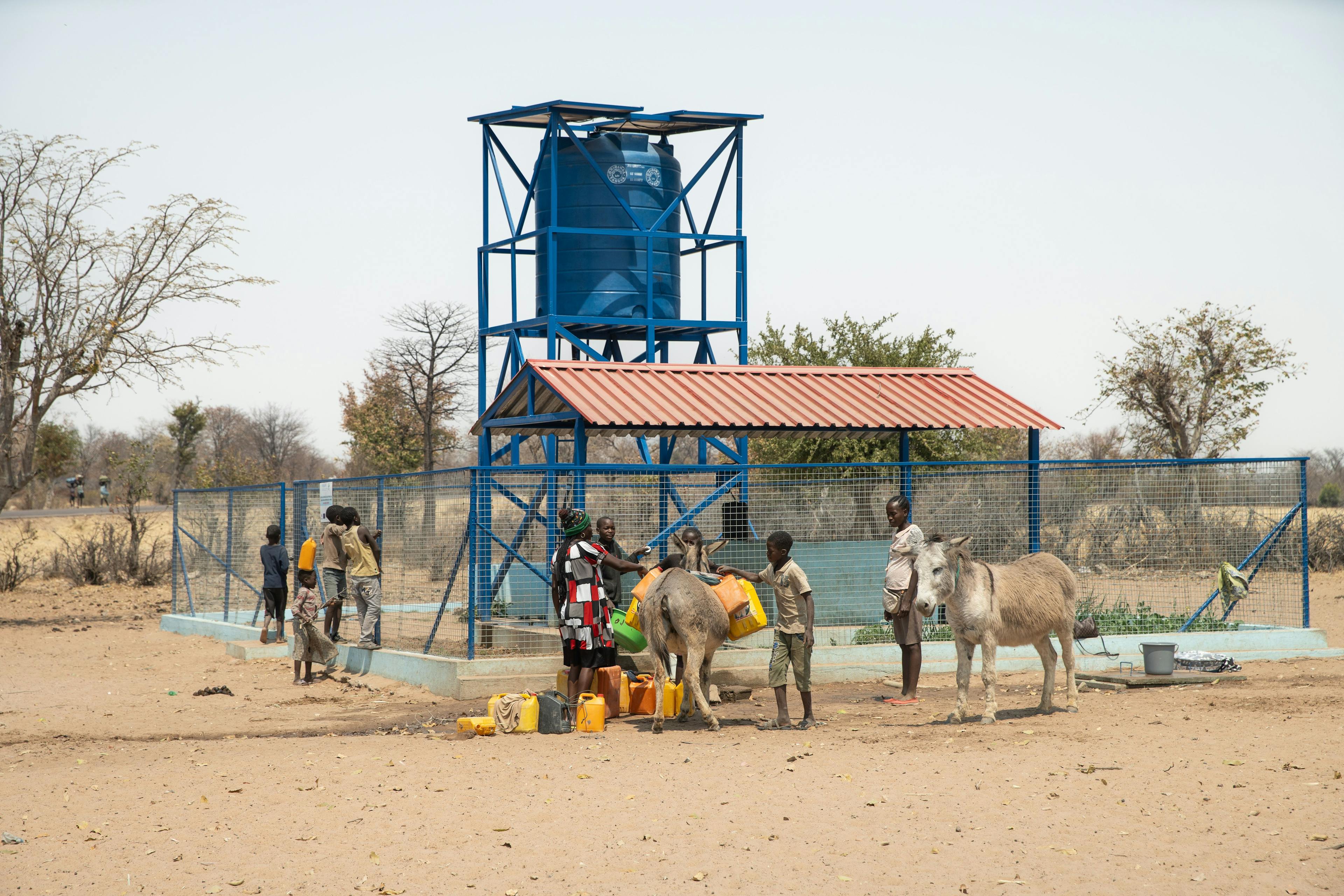
African Shifts • 1.1
ClimateJustice
ClimateJustice
Africa is a small carbon polluter, but hard hit by climate disruption
Introduction
Africa is at the frontline of the climate crisis. Lives and livelihoods in the continent are already being disrupted by climate shocks and stressors. The Africa Climate Mobility Initiative aims to put people at the core of the continent’s adaptation journey.
About 8% of Dar es Salaam lies within the low-elevation coastal zone. This will make a significant part of the growing population in the city exposed to flood events and sea level rise. Improving risk predictions and understanding coastal risks will help the 122 thousand people projected to move out of Dar es Salaam by 2050 plan and adapt to climate change.
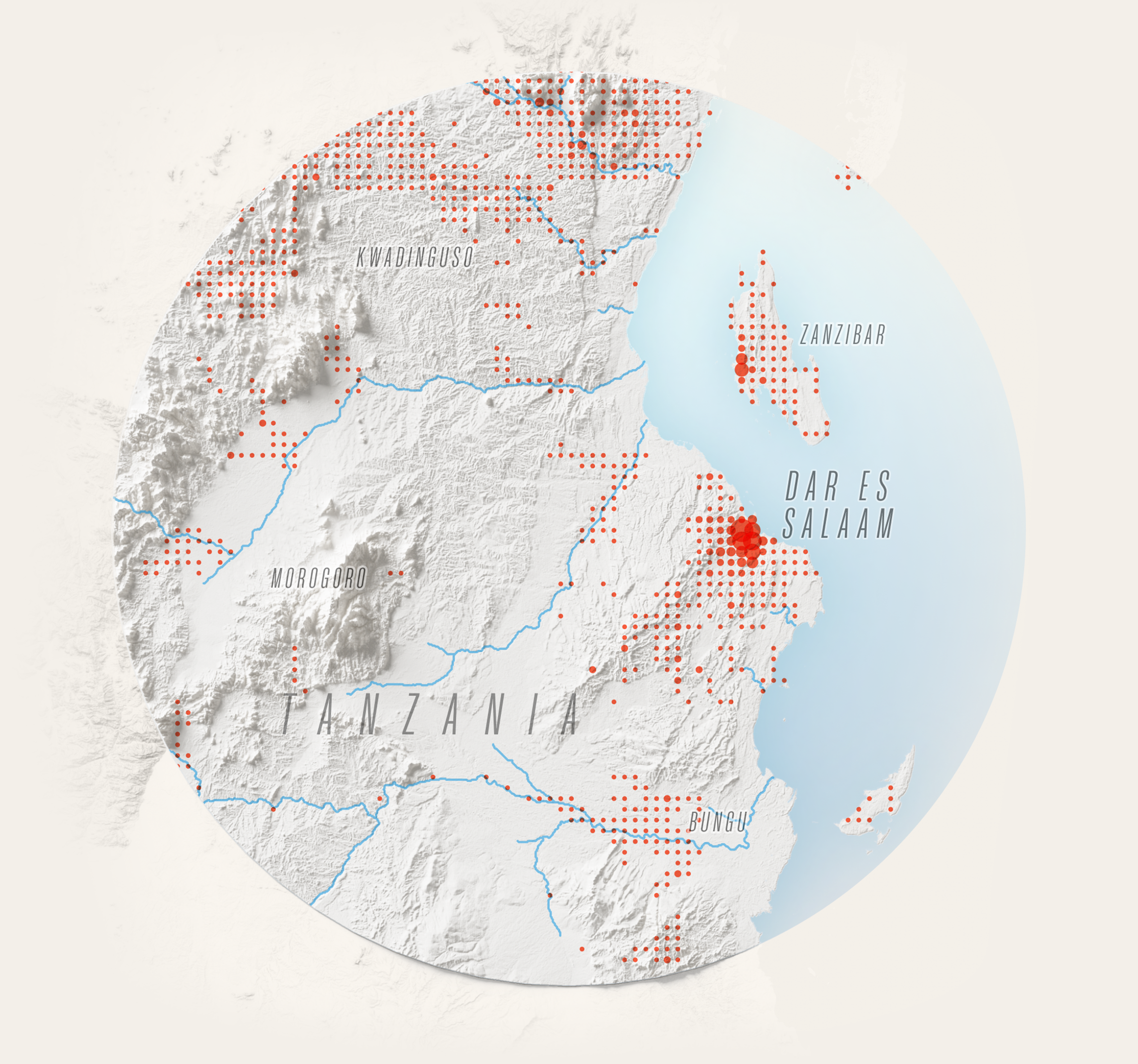
The climate crisis is here: Millions are already experiencing climate shocks
Over the past two decades, climate-related disasters have impacted 337 million people across the African continent. Cyclones Idai and Kenneth hit the east coast in quick succession in 2019, resulting in 46,000 deaths and damage estimated at USD 2.3 billion. Floods have affected more people in recent years, while droughts are proving more deadly: flooding accounts for 32 percent of the disaster-linked deaths, and droughts for 46 percent. Climate impacts are also hampering Africa’s development, including through water shortages, reduced food production, and low economic growth.
People are already moving in response to sudden and slow-onset disasters linked to climate change. This trend will only accelerate as the planet continues to heat. Moving is an age-old human coping strategy and is one way for Africans to reduce vulnerability and adapt to worsening climatic conditions.
Climate mobility: A working definition
The Africa Climate Mobility Initiative (ACMI) defines climate mobility as the movement of people that is motivated by the adverse effects of sudden- or slow-onset climate impacts. Climate mobility happens within and across national borders. It involves different levels of constraints, agency, and vulnerability and encompasses both forced displacement and migration, including planned relocation. Climate mobility occurs over different distances and can be temporary, recurrent, or permanent.
Africa is vulnerable, but not everyone is equally affected
How vulnerable a person or community is to climate change depends on where they live, how they make their living, what resources are available, and how much agency they have. As Africa’s growing population spreads into risk-prone areas, such as low-lying informal settlements in coastal regions, more people are exposed to risk. Persistent marginalisation continues to deprive certain groups and communities, particularly poor women, youth, and minorities of socioeconomic opportunities. The COVID-19 pandemic has deepened poverty across the continent. These factors combined with low levels of climate literacy are hampering Africa's ability to mobilize collective efforts to adapt to climate disruptions. Dramatic changes in rainfall may lead to declining outputs in agriculture and livestock herding, the mainstay sectors of Africa’s rural economy. Climate disruptions will also test states’ already stretched capacity to reach and support populations with social services, particularly during unforeseen emergencies.
Closing the climate adaptation gap
Africa urgently needs collective efforts to keep global heating inside the UN-determined guardrail of 1.5°C. Every fraction of warming avoided will protect Africans against further loss and damage to their livelihoods, economies, agriculture, health, and ecosystems. The greater the planetary heating, the greater the human toll on the continent as people are sickened, impoverished and displaced.
Injustice is at the heart of Africa’s experience of the climate crisis. Historically, the continent has contributed less than 3 percent to global greenhouse gas emissions, and yet it is one of the most climate-vulnerable regions.
As a relatively small emitter, Africa’s greatest contribution to climate action is to establish people positive, nature positive adaptation and development strategies. By preparing its people and institutions and investing in resilience, Africa can strengthen their agency and harness climate mobility to help communities and countries adapt and drive development under more severe climatic conditions.
Figure 1
Despite their lower contributions to global greenhouse gas emissions, African countries are amongst the most vulnerable to climate change.
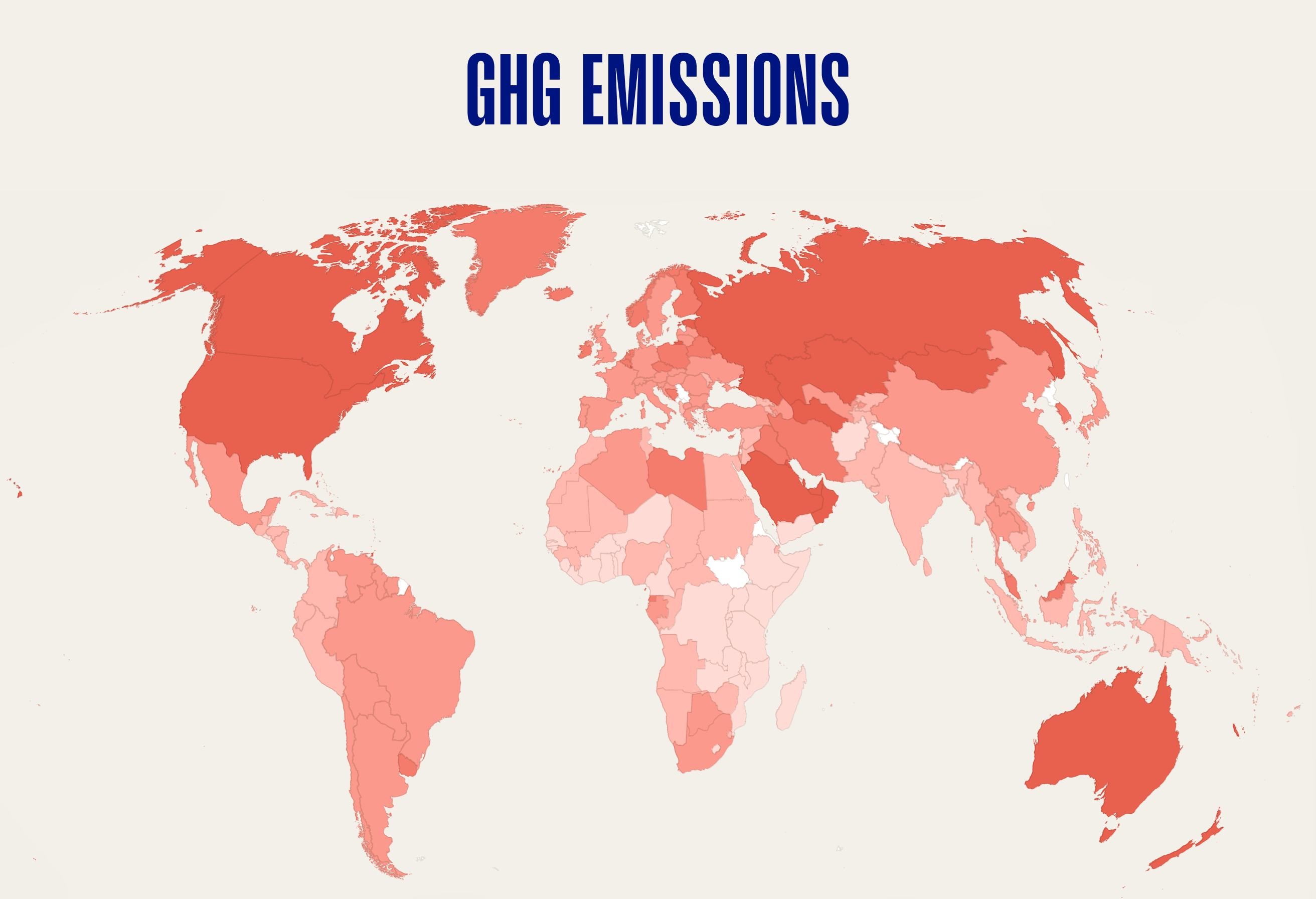
Greenhouse Gas Emissions tCO2eq/capita
0–2
2–5
5-10
10-15
>15
Unknown
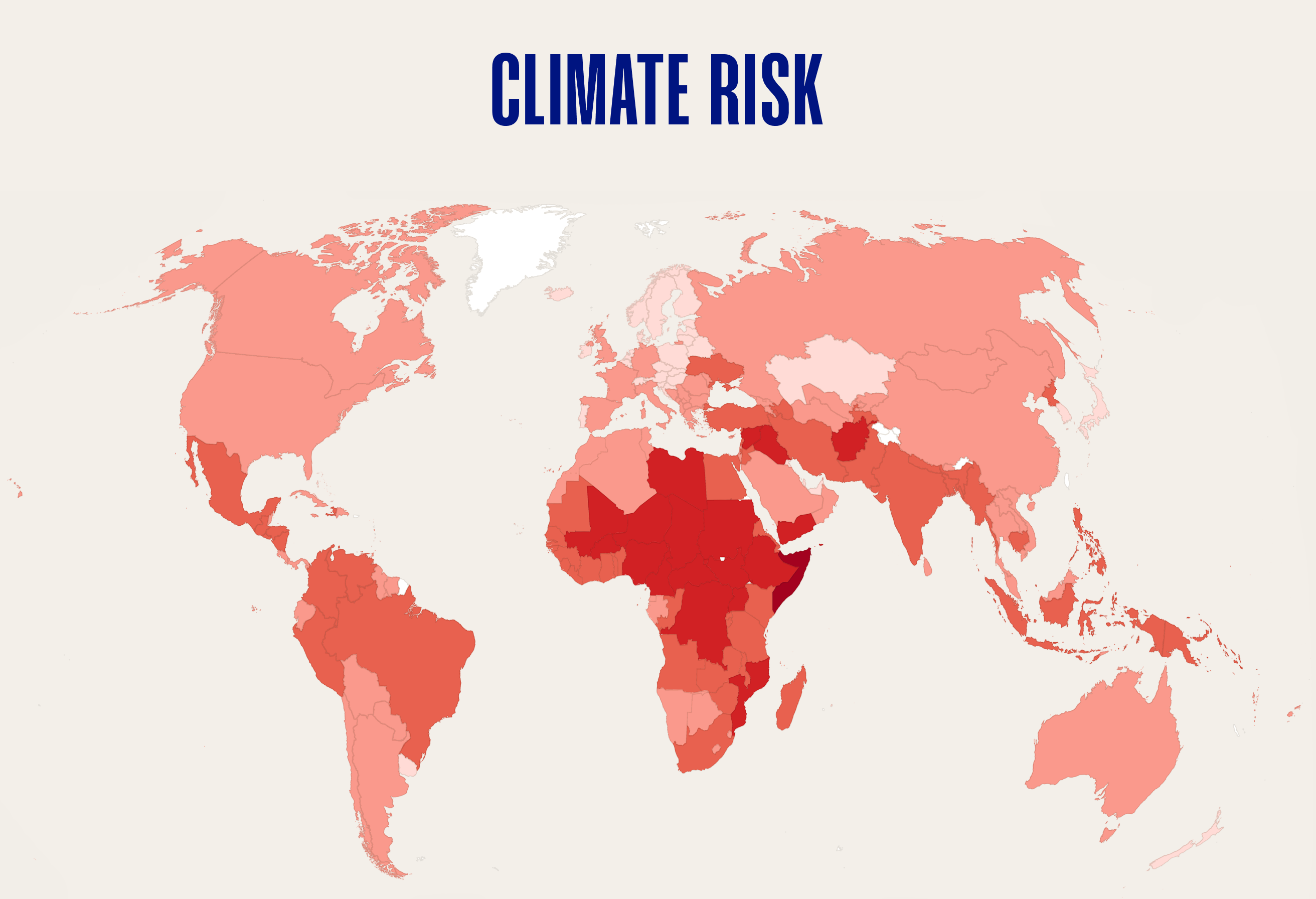
Climate risk scores
Very Low
Very High
Unknown
Source: IPCC 6th Report, WGII, Chapter 9; INFORM Risk scores normalized between 1 to 10 in 2050 under SSP3 scenario. INFORM Risk Index combines hazards, exposure, vulnerability and response capacity indicators.
The ACMI approach
The Africa Climate Mobility Initiative aims to provide research, data, and projections that inform policy and foster cooperation in support of locally anchored solutions for climate adaptation in communities across Africa.
The ACMI has developed a cutting-edge Africa Climate Mobility Model to forecast possible scenarios for future climate displacement and migration as far as 2050. The modelling projects source and destination areas for climate mobility across the entire continent.
ACMI also undertook field research to capture the diverse present-day experiences of climate vulnerable communities. It collected primary data through surveys, focus group discussions and interviews in seven African communities that are already experiencing climate disruptions. This allows a deeper understanding of how people perceive these impacts, how they adapt and whether they decide to move.
The ACMI consulted African and global experts, practitioners and policymakers to validate the findings and develop a shared analysis and Agenda for Action. The above outcomes are presented in full in the report African Shifts. The Africa Climate Mobility Report.
The Way Forward
Planning for climate mobility means making adaptation people positive by empowering communities to envision and shape their future in the face of climate change and participate in building resilience.
Chapter 2
Lay of the Land
Traditional ways of life in the age of climate disruption
